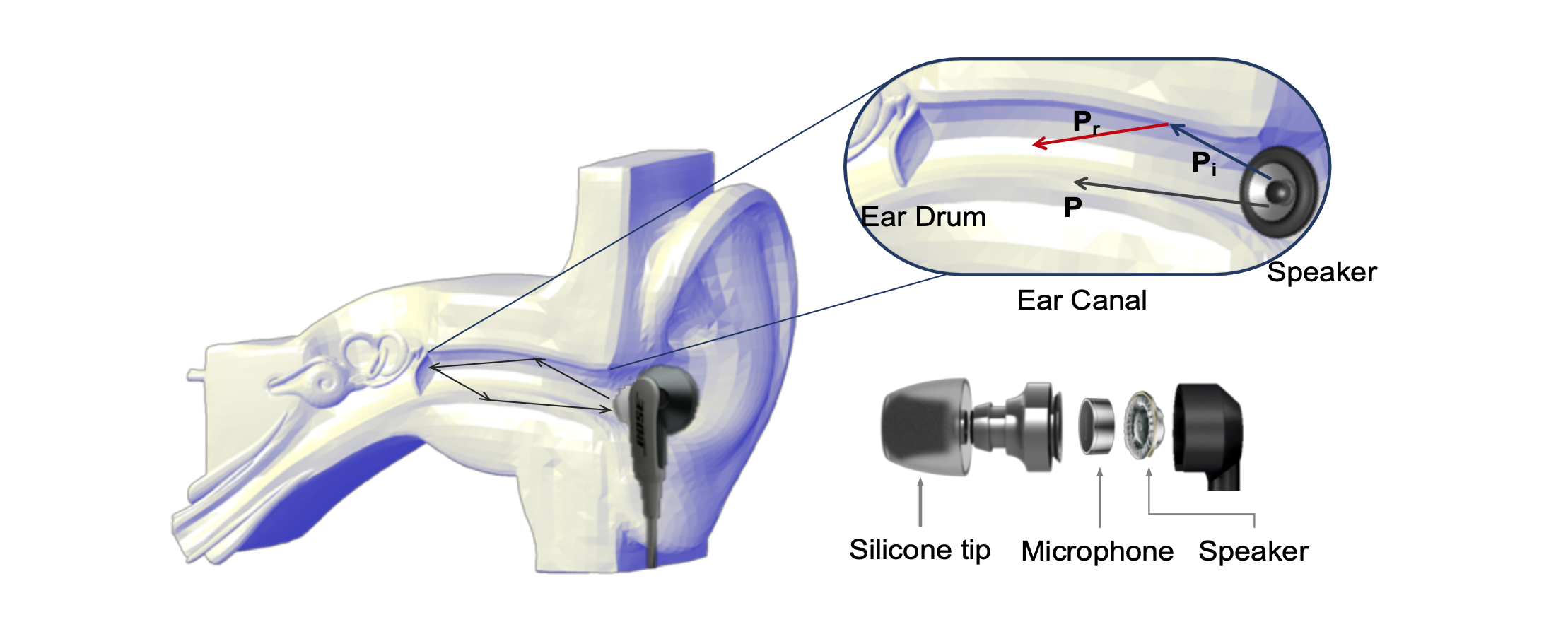EarEcho: Using Ear Canal Echo for Content-Independent Wearable (Earphone) Authentication
- 3 minsIntro
EarEcho is a brand new, novel, and user-friendly solution for mobile device authentication. This technology uses modified wireless earbuds to unlock smartphones (or other mobile devices) via the users’ ear canal.
The prototype was developed and described in the published paper EarEcho: Using Ear Canal Echo for Wearable Authentication, achieving roughly 95% accuracy with 1-second-authentication, the score improved to 97.5% as it monitors the subject using 3-second windows continiously.
Motivaiton
There is increasing evidence showing that wireless earbuds could become the next smart watch and serve as a promising platform for human computer interaction. Big companies like Apple, Samsung, and Google are also putting more efforts in developing their new earbud products.
“The global earphones and headphones market is projected to reach values of more than $36 billion by 2024, growing at CAGR of around 13% during 2018-2024.” – According to Arizton
More and more functionalities have been equipted by the latest products, for example, some smart earphone is already able to track the users’ running distance, speed and recognize simple head motions like nodding and shaking. In addition, taking advantage of better sound quality, convinient voice assistants and extended battery capacity, people (especially young generations) are spending longer time using wireless earbuds. As a result, wireless earphones have recently seen a skyrocketing growth in the consumer electronics market, probably faster than any other wearable devices. Thus, the increasing popularity and pervasiveness of wireless earphones make a huge potential as the next generation human-computer interface, and moreover, a new modality of user authentication.

What was done?
- Developed sound event detection and acoustic signal processing techniques for universal noise interference cancellation on captured ear canal acoustic characteristics.
- Proposed an end-to-end system framework, including a context-free acoustic feature extraction model based on transfer functions with Welch’s power spectral density estimation.
- Designed the prototype that packs a commercial earphone with a microphone, and performed extensive experimental evaluations about the system robustness in diverse application scenarios.
How it works?
When a sound is played by the earbud (speaker), it propagates through the ear canal, and get reflected and absorbed by the ear drum and canal wall — all of which produce a unique signature that the earbud (microphone) can record. The info recorded is then sent via Bluetooth connection to the user’s smartphone for verification.
With the universal noise interference cancellation, it doesn’t matter what the sound is being played. Which means that the system can work with whatever you listen to.
What is highlighted?
- Ubiquitous Targeting at prevailing wireless earphones on the market, our system needs no extra sensors except for a low cost microphone, which can be easily deployed by large manufacturers with minimum hardware costs.
- Unique Ear is claimed to be more stable than face, because it is less affected by users’ emotions and ages.
- Secure Data collection and authentication is conducted in an unnoticeable manner, making it very difficult for malicious attackers to steal the enrolled user’s ear (physical and physiological) information through side-channel attacks.
- Unobtrusive The system was designed to be user-friendly, as it works passively during the daily use (whenever wearing the earphones) without specific interruptions. EarEcho doesn’t require active authentication operations, i.e., facing the camera or pressing on the fingerprint sensor.
- Robust EarEcho has demonstrated its stability over time and robustness to cope with the uncertainties on the varying background noises, body motions, and sound pressure levels.
Where can it be used?
It is ideal for most scenarios where users are required to verify their identity and earphones are involved: making phone call, entertaining (music, gaming, VR/AR), during fitness, or even making mobile payments. It also could eliminate the need to re-enter passcodes or fingerprints when a phone locks up after not being used.